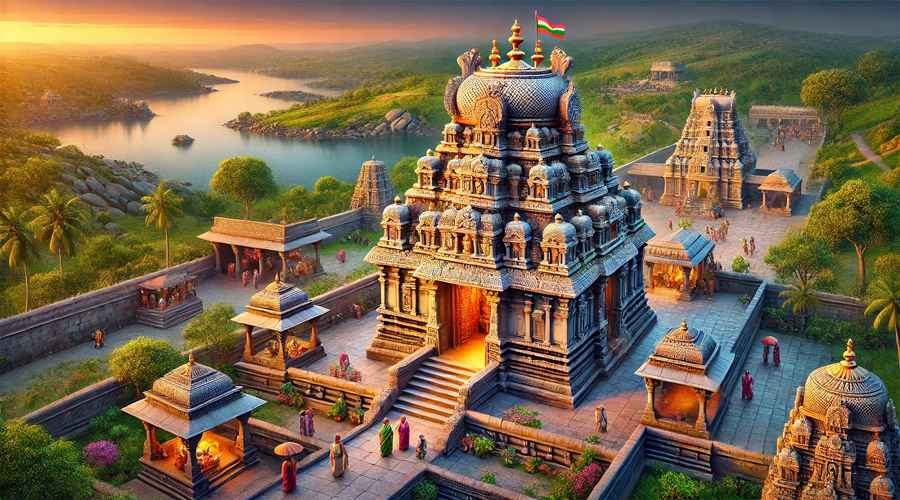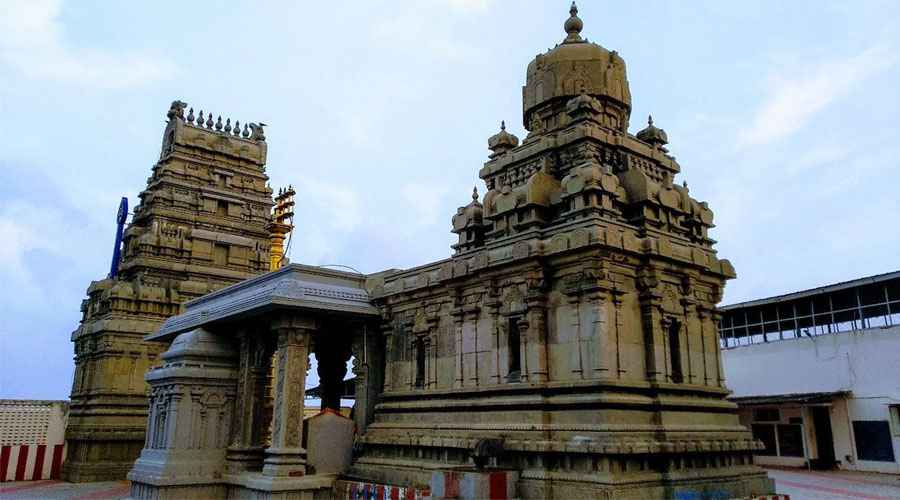The story of the Thyagaraja Temple, also known as the Thyagaraja Swamy Temple, is a rich tapestry of history, mythology, and cultural heritage intertwined with the religious and architectural traditions of Tamil Nadu, India. Located in the town of Tiruvarur, this temple is not only a sacred space of worship but also a prominent center of Tamil spiritual and cultural life, with roots dating back to the 7th century under the Pallava dynasty. Its legacy continues through elaborate rituals, inscriptions, festivals, and architectural grandeur that narrate its profound significance.
Mythological Origins
The temple’s legend is closely linked to prominent Hindu deities—Lord Shiva, Lord Vishnu, and Lord Brahma—who are considered part of the Hindu trinity responsible for creation, preservation, and destruction. According to Hindu mythology, Lord Brahma created gods and demons (asuras), who frequently clashed. Two demons named Madhu and Kaitabha once stole the sacred Vedas, cutting them into pieces and hiding them deep in the ocean. Lord Vishnu initially tried but failed to retrieve the Vedas, prompting him to pray to Lord Shiva and Goddess Parvati for help. He assumed the form of Matsya (a fish incarnation) and successfully recovered the Vedas from the sea.
Vishnu then brought these sacred texts to the deity of the Thyagaraja Temple, who is believed to have purified and restored the Vedas. The temple’s sacred Makizha (Mango) tree is said to be the wishing tree of the gods, enhancing the temple’s divine aura. This mythological narrative underscores the temple’s spiritual role as a fortification of divine knowledge and cosmic order.
Historical Development
Historically, the Thyagaraja Temple finds its origin during the reign of the Pallavas in the 7th century. It was later expanded and reconstructed under several regimes, most notably the Chola dynasty in the 9th to 13th centuries, who left behind significant epigraphical evidence linking to temple administration, ritual practices, and cultural patronage. One famous story involves the Chola king Muchukunda, who obtained a boon from Indra (the king of gods) asking for an idol of the deity Thyagaraja, depicting Lord Shiva dancing on Lord Vishnu’s chest. Indra attempted to mislead the king by creating six replicas of the idol, but the king identified the true image, which was consecrated in Tiruvarur as the prime deity.
Several inscriptions within the temple date back to the Chola rule, marking gifts, construction activities, and ritual endowments. For instance, the 20th regnal year of Rajendra Chola I (early 11th century) records ornate gifting and temple enhancements, including gold plating and installing numerous jewels and lamps in the shrine. These inscriptions also speak of the temple’s role as a hub of religious and educational activities, with scholars and priests given land grants to pursue philosophical discourse and temple services. The temple once housed 64 bronze Nayanmar (devotee-saints) statues and hosted devadasis (temple dancers) who performed sacred dances dedicated to the deities Thyagaraja and Vadivudaiamman.
Architectural Grandeur and Cultural Significance
The Thyagaraja Temple spans about 30 acres, with seven concentric prakarams (corridors) and more than 100 shrines inside the premises. Its monumental scale includes tall gopurams (gateway towers), multiple vimanas (shrine towers), and countless sculptures and icons. It is reputed to hold the largest temple chariot in Asia, used during annual festivals to carry the deity in procession attracting thousands of devotees.
Architecturally, the temple is said to have inspired the Brihadeeswara Temple in Thanjavur, a UNESCO World Heritage site, exemplifying Tamil temple architecture. Its vast complex includes sacred wells, 365 Shiva lingams representing the days of the year, multiple gardens, and numerous idols of various deities, including 86 Vinayaka (Ganesha) figures and the full Navagrahas (nine planetary deities), who worshipped Thyagaraja to be released from a curse.
Unique Religious Practices and Festivals
One of the most remarkable features is the deity’s portrayal performing “Ajapa Thanam,” which means “dance without chanting.” It is believed that the idol of Thyagaraja itself performs a divine dance without external invocation, an expression of Lord Shiva’s cosmic dance of creation and destruction. This has made the temple a prominent site for classical dance and devotional music traditions in Tamil Nadu.
The temple also hosts numerous festivals, especially the grand chariot festival, where the giant temple chariot is pulled through the streets of Tiruvarur. The rituals inside follow ancient traditions, with continuous daily worship and festival cycles preserving centuries-old practices. The temple is also associated with the poet-saint Thyagayyar and revered Tamil saints like Sundarar and Pattinathar, enriching its spiritual atmosphere.
Summary
In essence, the Thyagaraja Temple of Tiruvarur embodies a unique blend of divine mythology, historical legacy, exemplary architecture, and vibrant culture. From its mythical origin involving the recovery of sacred knowledge to its development into a grand Chola monument, the temple stands as a living museum of Tamil Nadu’s spiritual heritage. Its architectural magnificence, ritualistic depth, and role as a cultural beacon continue to draw devotees and scholars alike, making the Thyagaraja Temple not only a place of worship but a testament to the timeless traditions of India’s ancient past.
This temple remains a symbol of divine dance, sacred knowledge, and eternal devotion, resonating deeply with the spiritual pulse of Tamil Nadu and Hinduism in general.



